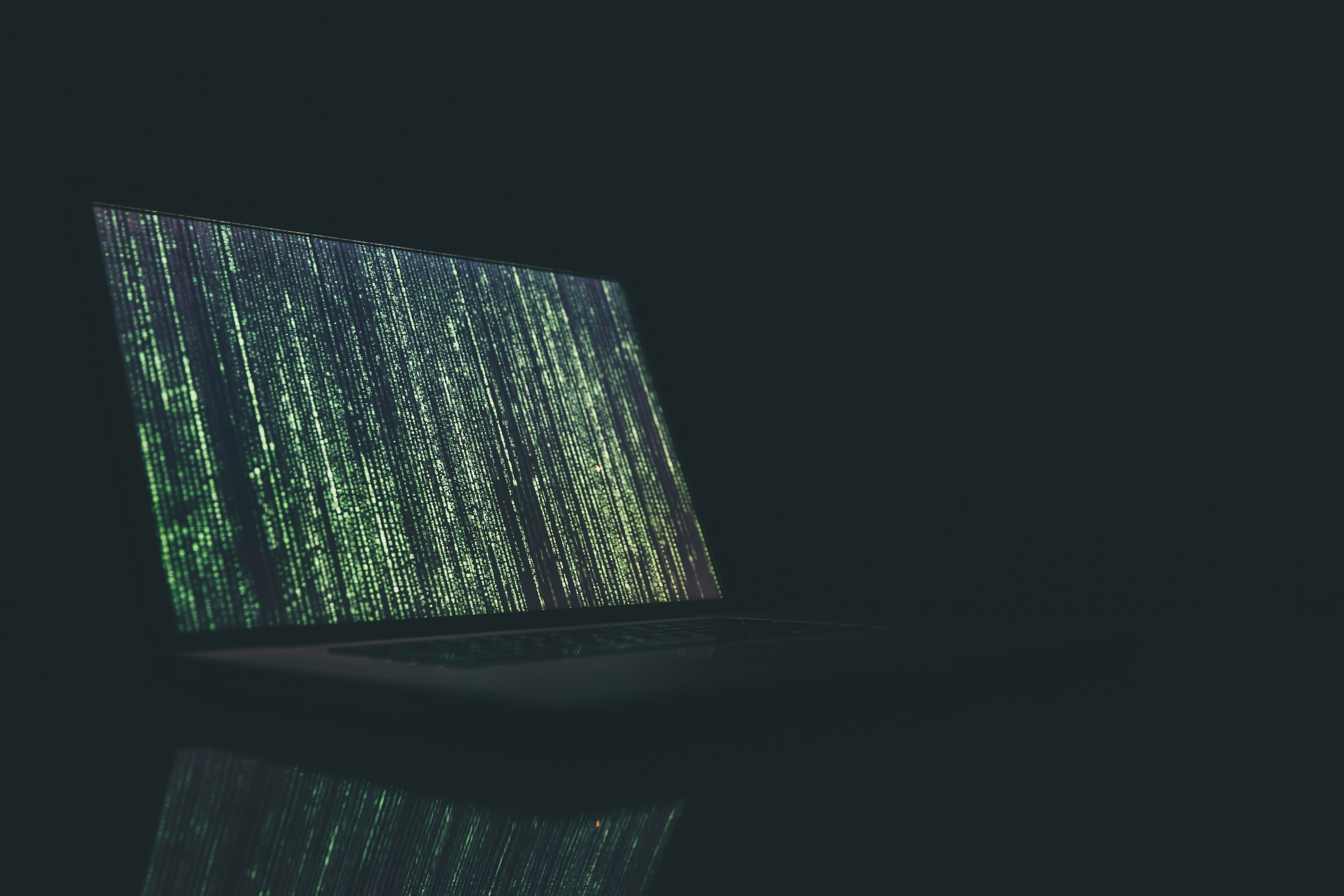Advancing systemic defence: What cyber leaders say about fighting phishing and fraud

Cybersecurity must no longer be reactive but embedded in systems from the start. Image: Unsplash/Philipp Katzenberger
- Phishing and cyber-enabled fraud are growing at an alarming rate, fueled by cybercriminals’ use of AI.
- Cybersecurity must shift upstream, adopting a more systemic approach that embeds safety into digital infrastructure rather than relying on users to detect threats.
- Three leaders from Paladin Global Institute, Microsoft and the Institute for Security and Technology stress the need for coordinated action.
As cybercrime rapidly evolves, phishing and scams driven by artificial intelligence are now costing the global economy over $1 trillion annually – a staggering figure that underscores the need for a more systemic and coordinated response.
The World Economic Forum's Partnership against Cybercrime, in collaboration with the Institute for Security and Technology (IST), is advancing the “Systemic Defence” project, exploring how a multi-stakeholder, systemic approach can shift responsibility upstream and better defend against phishing and cyber-enabled fraud.
At the RSA Conference in May 2025, leaders from Paladin Global Institute, Microsoft, IST and the World Economic Forum came together to discuss this effort.
Rather than relying solely on end-user behaviour, they examined how a systemic approach can foster a safer, more trustworthy cyberspace. By shifting efforts upstream, this initiative seeks to proactively strengthen the digital environment and mitigate the technological vulnerabilities that enable criminal exploitation.
To dig deeper, we asked participating experts about the rise in phishing and cyber-enabled fraud and what can be done to stop it. Here’s what they shared:
How can governments create incentives that encourage infrastructure actors to adopt “safety by default” for users?
Kemba Walden, President, Paladin Global Institute
Governments must strategically reshape market forces to place cybersecurity responsibility on those best positioned to reduce risk, shifting consequences away from the vulnerable while preserving innovation and competition. When I look at the US government’s $760 billion in annual procurement power, I see a strategic opportunity to reshape digital security at scale.
This isn't abstract strategy – it's practical market reality. When federal agencies demand technologies that are safe by default and secure by design, we create ripple effects throughout the digital ecosystem. When these technologies are battle-tested in critical environments – from cloud infrastructure to identity management systems – security features stop being expensive add-ons and start becoming standard expectations.
Governments must strategically reshape market forces to place cybersecurity responsibility on those best positioned to reduce risk, shifting consequences away from the vulnerable.
”We need a pragmatic approach to enabling safe and secure infrastructure that includes both the imposition of liability but also grants incentives. Governments can impose liability on software providers for insecure software products; but also, establish grants to build security into critical technologies and leverage government procurement to improve accountability.
This system should reward providers who build in fundamental protections such as secure domain name systems, phishing-resistant multi-factor authentication and real-time fraud detection. These aren't cutting-edge innovations; they're table stakes for a functioning digital society.
Clear, industry-driven benchmarks for "secure infrastructure" that are both technically sound and operationally feasible are critical. The government must work with industry to ensure these benchmarks are not only technically sound but harmonized and seamlessly integrated into the digital ecosystem.
Why have current efforts to stop phishing and cyber-enabled fraud failed – and what role can tech companies play in turning the tide?
Kelly Bissell, Corporate Vice President – Security & Fraud, Microsoft
Despite billions spent on cybersecurity, phishing and cyber-enabled fraud aren’t just surviving – they’re thriving. Why? Because the fight against them is fundamentally flawed. We’ve built firewalls and filters but we’ve underestimated the most exploitable vulnerability of all: human nature.
Out-innovate the attackers or be outrun: if cybercriminals are using AI, so should we — ruthlessly.
”Cybercriminals don’t need to hack machines when they can hack minds. They exploit trust, urgency, fear – and they’re getting frighteningly good at it. With AI-generated emails, deepfake voices and impersonated websites, phishing attacks today are nearly indistinguishable from the real thing. Users are told to “stay vigilant” but constant alerts blur real threats into background noise.
Our defences are reactive. We patch after breaches, blacklist after scams and train users after they’ve clicked. Criminals, meanwhile, are agile, anonymous and emboldened by weak international cooperation and outdated laws.
Cybercrime is cheap, global and high-reward. So what can we do about this? Here are 7-steps we must take as a community:
- Stop blaming users and start training them like assets: Users aren’t the weakest link – they’re the most underutilized defence. We should ditch generic training for immersive, role-specific simulations with real-world realism. Stop punishing mistakes and start building a culture where vigilance is second nature.
- If hackers use AI, so should we: Ruthlessly. Cybercriminals use AI to craft flawless phishing and mimic humans. Why rely on outdated detection systems? Fight fire with fire: deploy AI that learns, adapts and acts in real time. Automate threat containment – milliseconds matter.
- Cybercrime is global, our defence should be too: Borders mean nothing to hackers. So why are we still fighting them with fragmented, national-level policies? We need real-time, cross-border intelligence sharing and unified legal frameworks that make it impossible for cybercriminals to hide behind jurisdictional loopholes. If we don’t build global alliances, we’re just playing whack-a-mole – and losing.
- Trust no one, verify everything: The age of implicit trust is over. Every device, user and access request must be verified — continuously, not just at sign-up. Zero-trust isn’t a buzzword; it’s table stakes. We must also eliminate legacy systems – if they can’t be patched, they pose a liability.
- Make cybercrime unprofitable: Cybercrime thrives because it’s cheap, easy and lucrative. Let’s flip the script. Use blockchain forensics to track and freeze stolen funds. Tear down phishing kits, botnets and dark web markets with the same force we use against physical threats.
- Start fighting as a team: Cybersecurity isn’t a solo sport but a team endeavour. If one company gets hit, the whole ecosystem is at risk. No more hoarding intelligence, share it in forums such as the Global Anti-Scam Alliance. We need real-time threat feeds, shared indicators of compromise and collaborative defence. Silence helps attackers; sharing stops them.
- Out-innovate the attackers or be outrun: Cybercriminals never stop adapting — neither should we. Drive change by embedding AI in your security operations centre, scaling machine learning and data science to boost detections and building security by design. Invest heavily in AI and research and development for tools that keep pace with threats.
What is one critical change you think should happen at the infrastructure level to prevent phishing and cyber-enabled fraud?
Steve Kelly, Chief Trust Officer, Institute for Security and Technology
Prior to becoming an FBI special agent and getting involved in cyber investigations, I was a registered professional engineer working in the transportation field.
While pondering the internet’s inherent insecurity and profligate crime that it enables, a parallel from my previous vocation came to mind: roadways are designed and built to be inherently safe but not the internet.
Intuitive design features, such as geometry, signage and striping meet drivers’ expectations and help to avoid surprise; forgiving roadsides free of dangerous obstructions mitigate the consequences of error; and pedestrian-oriented development in urban areas reduces the opportunity for deadly conflicts between motor vehicles and pedestrians or bicyclists.
So how can we bring basic engineering principles to the internet’s core infrastructure so that users are safe and bad actors can’t prosper?
Too much is at stake and too many innocents are being victimized to stand on the sidelines.
”In our panel discussion, we discussed the importance of bringing trust and safety to the Domain Name System (DNS), opportunities to leverage the payment ecosystem, and ways identity initiatives, such as government-sponsored digital ID initiatives, might play a key role.
Too much is at stake and too many innocents are being victimized to stand on the sidelines. So pull out your slide rule and put on your hard hat; it’s long past time to make the core internet infrastructure secure by design.
In conclusion, the growing scale and impact of cyber-enabled fraud and phishing remain critical global challenges. The Forum’s Partnership against Cybercrime is committed to advancing systemic solutions that shift the burden away from users and toward more coordinated, upstream defences to better protect people online.
How is the Forum tackling global cybersecurity challenges?
Contents
How can governments create incentives that encourage infrastructure actors to adopt “safety by default” for users?Why have current efforts to stop phishing and cyber-enabled fraud failed – and what role can tech companies play in turning the tide?What is one critical change you think should happen at the infrastructure level to prevent phishing and cyber-enabled fraud?Forum Stories newsletter
Bringing you weekly curated insights and analysis on the global issues that matter.
More on CybersecuritySee all
Brett Winterford
December 15, 2025






